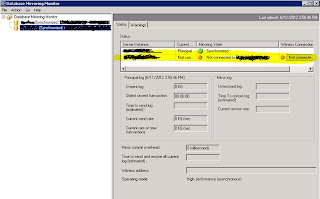So in order not to get trapped it's better to use ALTER DATABASE MODIFY FILE command. Below script generated ALTER DATABASE commands, you just need to enter your database name and new locations for data and log files:
DECLARE @NewDataFolder nvarchar(1000);
DECLARE @NewLogFolder nvarchar(1000);
DECLARE @FileTable table (lkey int identity (1,1) primary key, [name]nvarchar(100), physical_name nvarchar(1000), [type] int );
DECLARE @CmdTable table (command nvarchar(1000));
DECLARE @sql nvarchar(4000);
DECLARE @count int;
DECLARE @RowNum int;
DECLARE @DbName nvarchar(100);
DECLARE @OldPath nvarchar(1000);
DECLARE @Type int;
DECLARE @LogicalName nvarchar(100);
DECLARE @ParmDefinition nvarchar(1000);
DECLARE @FileName nvarchar(100);
DECLARE @NewPath nvarchar(1000);
--Make sure that @NewDataFolder and @NewLogFolder has '\' at the end
SET @DbName = 'YourDBName'
SET @NewDataFolder = 'C:\SQLData\'
SET @NewLogFolder = 'C:\SQLLog\'
SET @sql = 'select name, physical_name, type from ' + @DbName + '.sys.database_files'
INSERT INTO @FileTable
EXEC sp_executesql @sql
WHILE @@rowcount > 0
BEGIN
SET @OldPath = (SELECT TOP 1 physical_name FROM @FileTable)
SET @Type = (SELECT TOP 1 [type] FROM @FileTable)
SET @LogicalName = (SELECT TOP 1 [name] FROM @FileTable)
SET @FileName = (SELECT REVERSE(SUBSTRING(REVERSE(@OldPath), 0, CHARINDEX('\', REVERSE(@OldPath), 1))))
IF @type = 0
BEGIN
SET @NewPath = @NewDataFolder + @FileName
END
ELSE
BEGIN
SET @NewPath = @NewLogFolder + @FileName
END
SET @sql = 'ALTER DATABASE ' + @DbName + ' MODIFY FILE (NAME = ' + @LogicalName + ', FILENAME = ''' + @NewPath + ''')'
INSERT INTO @CmdTable SELECT @sql
DELETE FROM @FileTable WHERE [name] = @LogicalName
END
SELECT * FROM @CmdTable
